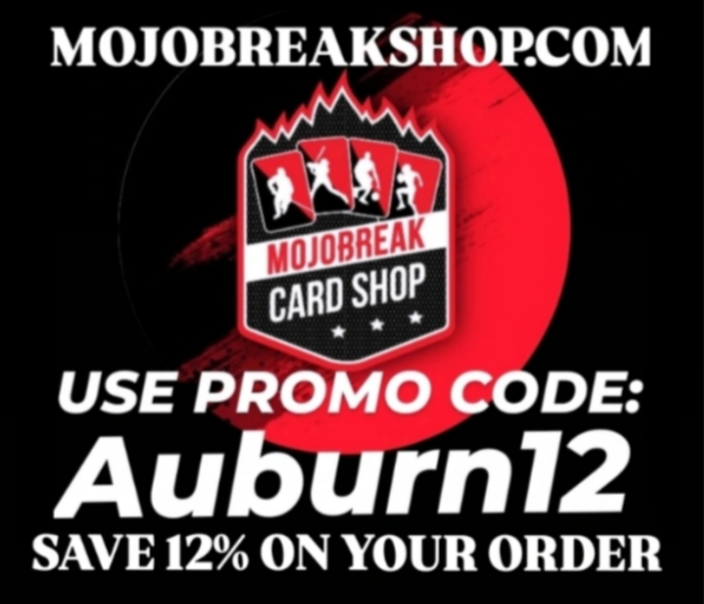Cards explode in popularity in 1990
Trying to predict what the market for sports cards will be in the near term future is a risky proposition. The nature of the business has changed dramatically for all those involved over the past 25 years. Sports Cards got hot in the early 1990’s, and if you talk to a person who ran a hobby store back in those days you are usually greeted with a huge smile. Money flowed in as new collectors young and old were searching for Ken Griffey Jr., Shaquille O’Neal, Barry Sanders and many other top rookie cards from the stars of that day. The boom of the early 1990’s led collectors to appreciate older sets and the market for vintage cards exploded. Suddenly the cards that were put on bike spokes back in the 1950s-1960s were sold off at high end auction houses for thousands of dollars. At the same time, packs of new baseball cards like 1990 Topps and 1989 Upper Deck were flying off the shelves. If a T-206 Honus Wagner and a 1952 Topps Mickey Mantle (in nice condition) value in the 1990s was tens of thousands – then why wouldn’t a Ken Griffey Jr. 1989 UD Rookie Card…… be worth that in 50 years? But the 1990s boom wasn’t all geared toward people trying to stash away an investment.
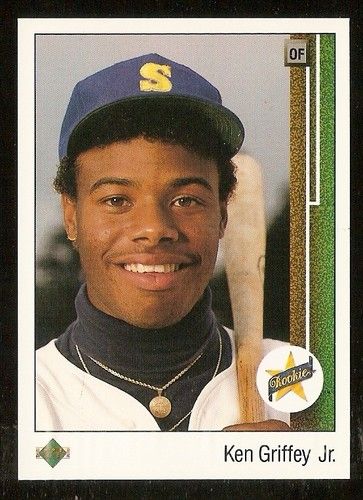
I would open packs of 1990 Donruss and cherish any Will Clark I pulled. No amount of money could pry that from my fingers. I knew many collectors in that day who treated their cards the same way. They were treasured and the stats and information on the card backs would provide a valuable resource in a day and age when the internet was in it’s infancy.
NBA & NFL cards help fuel demand for cards but at what cost?
The rise in popularity of the NBA and NFL during the 1980s-1990s was perfect timing for sports card manufactures. Magic Johnson, Larry Bird, and Michael Jordan among others helped raise the profile of the sport of NBA basketball ten fold. The NBA Finals was once shown on tape delay during the 1980’s an unheard of thought in todays world. Sets like 1989-90 NBA Hoops sent the basketball card market to a new stratosphere. The NFL gained in popularity in the late 1980s as well and hasn’t stopped since. It’s currently the most popular sport in the United States if you judge by national TV ratings and overall revenue. The success of those leagues in the early 1990’s made football and basketball cards rival the popularity of baseball card collectibles. That all led to card companies cranking out as many cards as they possibly could.
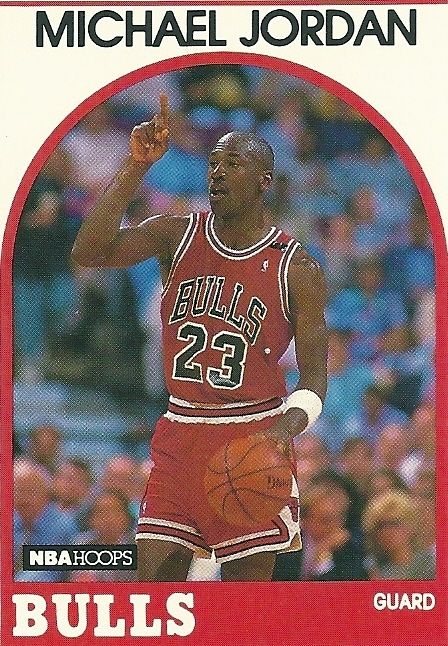
Today you’ll see some cards serial numbered to a certain amount of copies and even manufactures disclosing how many cases of the product they produced. But in the early 1990’s if someone needed several cases of the hot 1991 Pro Set Football cards – then they were printed for them. Once the hype and allure to collecting wore off sometime in the mid-late 1990’s, the “value” of cards printed in that era suddenly plummeted. Simple case of supply vs. demand.
Card companies come and go because of cost to do business.
Card Companies in the late 1990s realized the fault in their ways. Many of them folded into oblivion before they could stop the bleeding though. At the 2012 Las Vegas Industry Summit, someone involved with a large company in the business told me “websites come and go.” While that may be true, I guess so can card companies and the employees who work for them. In the mid-1990’s you started to see the companies left in the game aim to make the cards more collectible. For the first time you saw cards with autographs, cut up game used memorabilia and serial numbered cards inside the packs themselves. This all drove the price for packs and boxes up. The NBA, NFL, MLB were all gaining in popularity to an extent during that time. Each time one of those leagues went to re-up a TV deal or a licensing deal they got more money then before (think Madden, Reebok, Monday Night Football). It wasn’t going to get cheaper to get a license to produce cards even though the popularity of said cards had gone down. The leagues were flourishing into the 2000s – but the sports card business was tough and much more niche.
eBay pops. Autographs and Game Used Cards Arrive
In the 2000s gone were the days of .50 cent packs. Higher end cards took over and the popularity of online auction site eBay helped establish the California company as the leading marketplace for single cards. While the eBay CEO and board members may not have envisioned that when they started their company, they are very aware that the sports collectibles marketplace is a decent percentage of their total listed items for sale (which equals straight cash for stockholders homie). eBay helped create an instant way to sell that autograph or game used card but things were overpriced in those early days on eBay. I remember I sold a Barry Bonds, Jose Canseco and Griffey Jr. memorabilia card for $450. It was #/50 and I could only guess that card is maybe worth $10-$40 tops today. Any time you have a huge market though – eventually the number of sellers will out number the buyers.
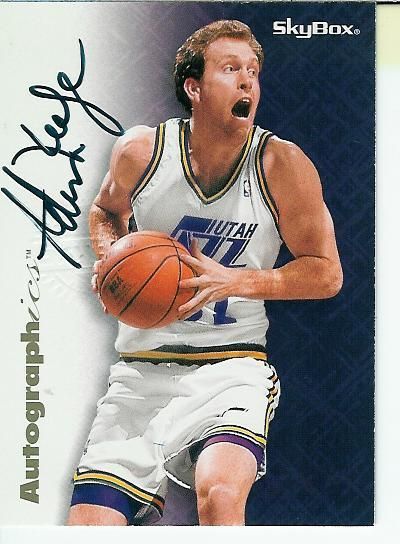
Many people were still unfamiliar with the internet in those days and especially selling on eBay. Soon enough people got the hang of it and prices dropped not only on singles but the market for full boxes of product. In those days you’d usually get “1 Hit Per Box” but that number has only grown over the years. Another case of supply and demand. The value declined on common autograph and game used cards because there were many more coming into the market each year.
Trying to sell product is a low margin business (RISKY)
From a sellers perspective the margin for selling boxes on eBay in the 2000s was slim (and still is), lower then 10% margin for any product for the most part. Many products you would lose money on if you tried to sell online. The market was tough – online and at the hobby shop level which had seen stores folding since the mid-1990’s and that pace continued into the 2000s. There wasn’t enough demand for the products and with the rise of the internet, your margins shrank by the day with upstart internet sellers trying to get into the game. In a lot of ways – getting into the sports card business is about the same as it was in 2000. Gamble and start a hobby shop and probably fail. Or hope you can create enough of a customer base with an online operation and do heavy, heavy volume (because your margin is small). Every “dealer” buys their products from similar places. Obtain a business license and buy wholesale or purchase direct from the manufacture (or someone like Atlanta Sports Cards or Blowout Cards which prices are about at or below wholesale). Buying direct from a company like Topps and Upper Deck is overrated and might be one of the biggest myths in the industry that you can get boxes on the cheap by buying direct. They make you buy everything and if you follow prices of boxes at the wholesale level you know that box/case prices can plummet upon release if collectors are sour or they produced too much of it. I’ve heard that the wholesale price of a product at a distributor like GTS or Sports Images for example can often times be “less” then the direct cost. Seems like a funny business model but the fact is prices fluctuate daily on new products and it’s one of the fun aspects of watching wholesale prices.
Sports Cards was a VERY small % of Topps Overall Business in 2000s
Without public knowledge of what a companies financials are it’s very difficult to know the overall health of the industry. Companies like Upper Deck have cut staff by a massive margin and that has been well documented around the web (hint, the CA government website posts which companies lay off people and what those positions are). While less documented, Topps has also trimmed staff. Topps used to be a public company and traded on the open market for about $10-15 a share but was sold in 2007 for around $385 Million. In 2006 they had $298.84 million in annual sales. That number is very deceptive as it relates to the sports card division of their business. Listen to a conference call back when the company was public and it was filled with information about the candy/confection business and the Pokemon market which at it’s peak was 40% of the companies gross sales. Very little talk of baseball cards. Sometimes just a few seconds – in what was usually about a 45 minute call. So in 45 minutes they talked about sports cards for a few seconds. I’ve heard the calls. That’s real talk. It was a small percentage of their business back in 2000-2006. And to this day – that probably remains to be true. If Topps is the biggest maker of sports cards – and it’s only a small percentage of their business – then you can scale down what the revenues must be like at Panini and Upper Deck and on down the line. Topps also has a lot of “goodwill” value. It’s a brand that has been around since the 1930’s in the candy industry. If someone were to “buy” The Topps Company, they would be buying it in part, because of it’s name brand value. Ask someone what company do they think of when they think baseball cards? I think you know the answer. And there is TONS of value (if you were to buy/sell Topps as a company) in that alone.
Collecting becomes more niche
Collecting in this day and age is much different then it was 25 years ago. No more gum. Base cards are more filler, and autograph and game used cards continue to, at least from a price perspective, carry the most value. Can cards get hot once again like the early 1990s? Card collecting was cool back then. Every kid I knew had some cards, pogs, or pokemon cards. Every single one of them. The business is different. I could walk into a rite-aide and pick up 1990 Donruss packs for .35 cents back in those days. They were right out front by the candy and every store like that had them. Now the places to buy cards is much more defined. Target and WalMart for the most part service the low end crowd looking to open some packs.

Online sites and scarce hobby shops give collectors an opportunity to buy higher end items (as well as the cheap stuff). Some products are only sold at the hobby level (which includes online sites like Blowout, DA etc)- and typically these are higher end products that carry a price tag of $100++ per box or pack. In a way, you probably have to be somewhat internet savvy to get the most out of collecting. And maybe this limits the chance cards could get hot like it was 1990 again.
Old Collectors Jump Back In
In 1990 I was 8 years old. Now 30, and still at it, I guess that collectors “come and go” but some are lifers like me. Not that I’m Donald Trump, but I certainly have some more money in my pocket then when my budget was .50 cents a week for packs. Many people my age have children. People my age, unless they feel burned by losing all their money by investing in Greg Jeffries cards, think cards are cool. With Fathers Day just passed, I found it remarkable how many stories I’ve heard recently about young fathers, around my age, introducing their kids to cards. It not only sparks an interest in the mind of the impressionable son or daughter, but my guess is fathers my age getting back into it start to think fondly about the old days of collecting in the 1990s.
While collecting is much more niche then in the 90s, the cards themselves provide many functions. Young kids may like to look at the pictures and stats. Player and team collectors will hunt down every card even if they don’t like the design. Autograph hounds that I see at minor league games rely on prospect cards from Topps and Bowman products so they actually have something to get signed. The reaction to a set like 2011 Topps Heritage Minor League was harsh from some collectors, but I can say without a doubt autograph hounds at minor league games love this set cause of the non-gloss base cards plus they are easy and affordable to get. And of course another aspect of collecting is the chase of the rookie card or high end autograph/memorabilia card. Who wouldn’t want a Michael Jordan autograph card? Look what happened when Jeremy Lin exploded in New York. Clearly people were willing to pay big money to get a small piece of the athlete they admire.
Some ideas that I have that could help the market. Some of these are not really practical from the business perspective but it’s fun to dream:
Idea: The Leagues Open Up Licensing & Tier the Brands
Business Side: Not likely
When you go shop for an automobile, a big factor is price. Maybe in the U.S. you’ll buy a Ford or Chevy if your budget is low. But if you got some money, a Mercedes or BMW might be in your wheelhouse. And if you have all the money why not a Ferrari? Mercedes doesn’t make a $20,000 car you can buy brand new. It’s all upper middle class or a luxury purchase. And I guess that the sports card companies do that in a way. Topps has Series 1, the flagship set, but also will release Five Star at $400+ a box and all kinds of price points in between. It’s just got to be hard to juggle all these sets that sometimes release within weeks of each other. I would love it if smaller, niche companies could come in and produce sets at pre-defined price points. ITG could make a hockey set branded and licensed by the NHL and NHLPA but it has to be high end. There are many possibilities and it would allow the card companies an opportunity to focus on a smaller niche of collectors and create a higher quality product. Don’t hold your breath on this ever happening.
Rant: Ok, I’ve come to the realization sticker autographs suck.
They are bad. I see the reason for them. Believe me. I get it. The business side doesn’t escape me. But they are ugly, plain and simple. I remember when Fleer came out with it’s Autographics insert auto’s found in packs back in the 1990s. They were one of the first companies to put autographs into its products. The cards looked the same, but you could find certain ones in certain products. So maybe they had a 100 card Autographics checklist of players. But for example, 10 of those would be found only in ‘SkyBox Premium’ another 10 cards from the checklist would be found in “SkyBox Metal” and so on. Topps did something similar in 2011 with it’s 60th Anniversary autographs. All the 60th Anniversary autographs were designed the same, but were found in different sets throughout the product lines.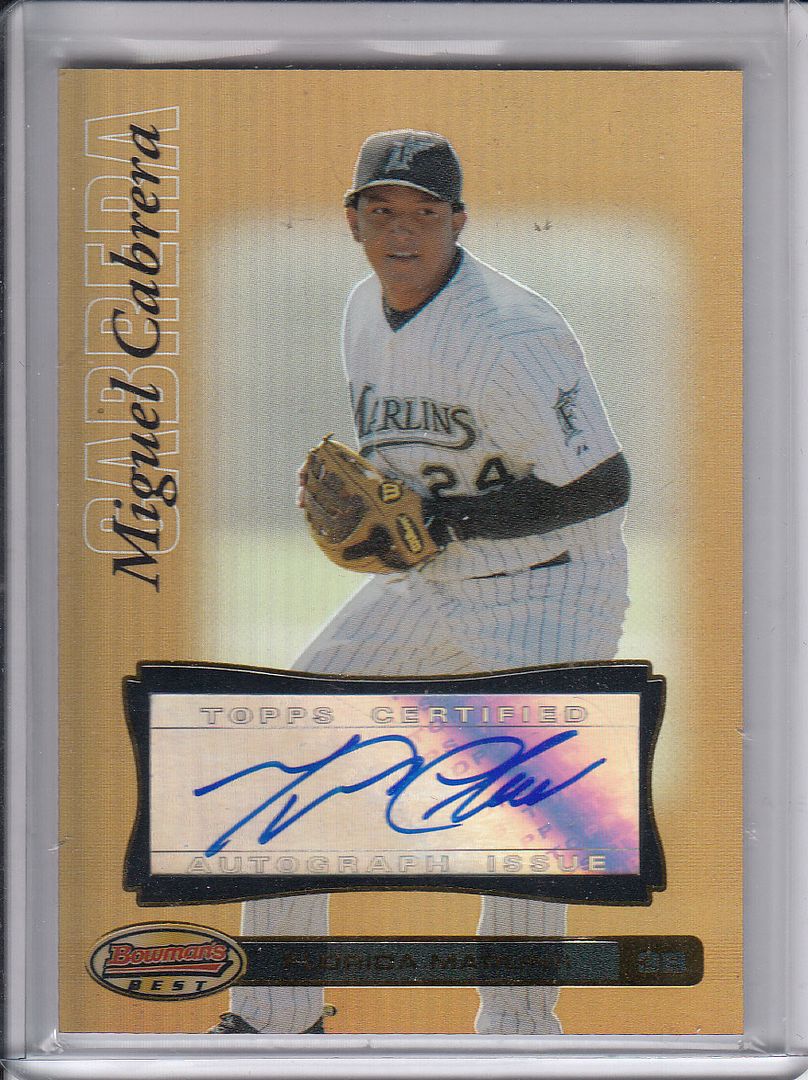
That is a way to get on-card content. Design an autograph set that will be inserted into each product. All the cards are designed the same. Get them signed and filter them into each or certain products. Each and every card these companies produce have to be approved by the league it’s made for. The MLB doesn’t want another Barry Bonds astrik card finding it’s way into packs. So they look them over. It slows down the process to get the cards printed and thus, get autographs on them. But if you have something like the 60th Anniversary autographs – all designed at once – the approval process should go much quicker.
Idea: Cards need to be easier to get.
Business Side: Not likely
How in the world do you do this…. I have no clue. Not as easy as it seems. Many people are not comfortable buying online. Many people don’t trust or don’t know how to use a site like eBay. Real talk. Seems crazy to think about but it’s a fact. Could Topps open stores like technology giant Apple does and sell it’s products? Don’t expect that to happen. Pigs may fly before that day. And if you think it’s easy getting on store shelves like Target and WalMart – then don’t ever get into the consumer product business. You will go broke.
Idea: Cards need to come out on a specific release day
Business Side: Not likely
When I go buy NBA2K13 I can’t get it a day early. I’ve asked my boy at Best Buy to hook it up, believe me. If I want to see a movie I got to wait for it to hit theaters. Cards need to be the same way. If it releases on July 13, 2013 – then that’s when everyone has access to it. The card companies don’t really give a dang about that. They already sold the product through the distributor, retail and direct channel. They don’t care that certain buyers receive product early and they can and will get more money if they list those cards for sale on a marketplace like eBay first. Go look at the data. I’ve never sold cards like that and only did boxes back in the day. But if I did sell single cards, I’d be hot as you know what that certain people can get product quicker based on geography and or special hook ups from dealers and distributors. This is very hard to monitor. I used to work at Target and they have a locked cage only a few people have access to. In this cage are time sensitive things like DVD’s, Video Games and Music CD’s that have yet to be released. No way the card companies try that model at places like Target and Walmart. It just won’t happen and it comes down to money. Trying to monitor it and punish the wrong doers would be a nightmare once you start talking about monitoring hobby shops, eBay and on and on.
Too concerned with Twitter/Facebook & Social Media?
Business Side: Social Media is cheap. Look for more of it
I can’t tell you the last day that went by that someone involved in the sports card industry didn’t brag about Twitter followers. Social media should be a crucial part to any business, but I haven’t seen anyone brag about how many MySpace friends they have recently. Websites come and go, and so can Twitter and Facebook. It’s an easy way to promote your business, but sites like these have proven to be more fads (AOL instant messenger, MySpace) then they are long-term solutions to your business marketing. Specifically, card companies could utilize video much more effectively – but that takes time and the headcount at these places are very small. Hobby shops could utilize promotional items and special deals (think Fathers Day Packs, Gold Rush etc.)….. but believe me…… those are few and far between.

Idea: Simple is better.
Topps has it easy. Just recycle designs that were done 20-50 years ago and people generally flip out with excitement. Look how long they’ve been making Heritage Baseball and what people thought of 2012 Topps Archives. How easy is it to be a card designer at Topps? Just dig into the files of an employee that is long, long, gone and just slap the modern player on it. One of the best sets Panini produced in it’s basketball line was Past & Present. Old school look, very simple and people generally are in love. The set lacks a simple numbered to #/10 or #/25 parallel on every player with a base card. Trust me – those would pop with certain players. Sometimes these sets are filled with tons of worthless insert cards that only annoy collectors. Keep it simple, don’t stay up too late at night, and create some value with parallel cards without slapping an auto or game used piece on it.


